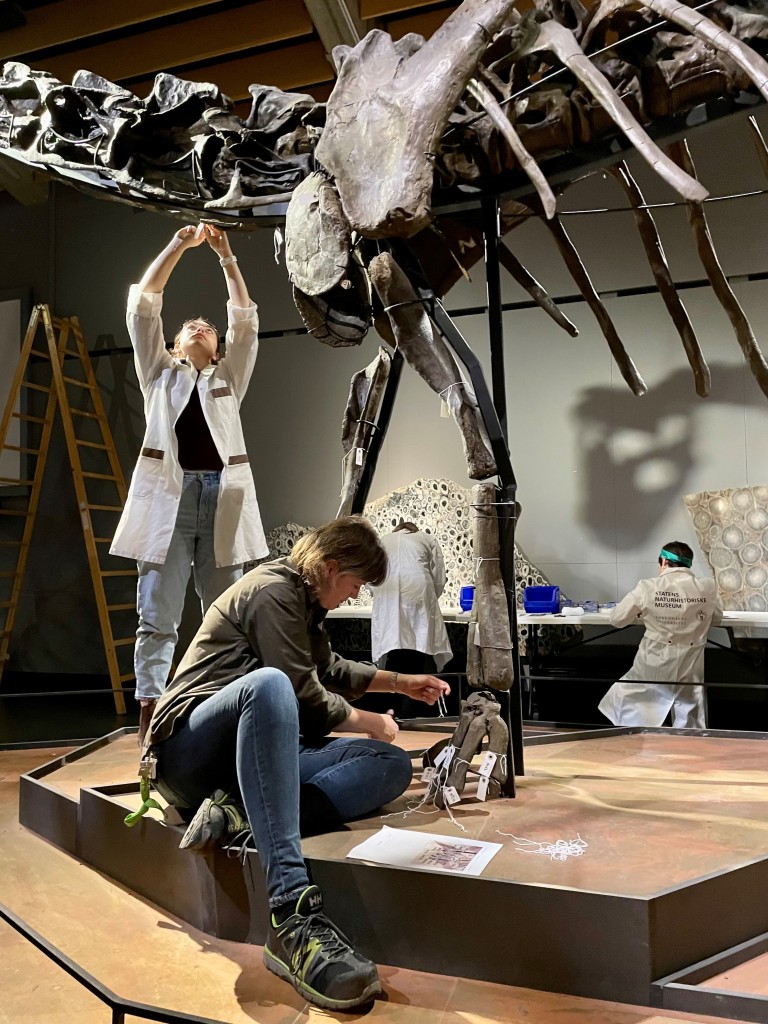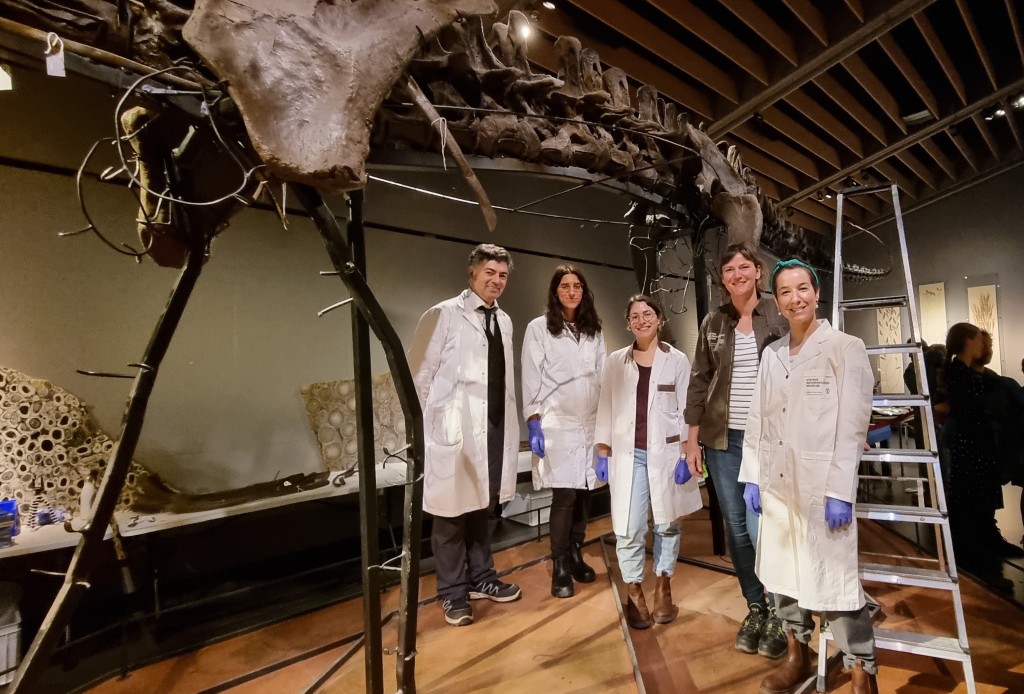Written by Bethany Palumbo, ACR, Head of Conservation Unit, The Natural History Museum of Denmark.
At the Natural History Museum of Denmark, work is currently underway to prepare and move thousands of specimens to a new building, located in the Botanical Gardens in Copenhagen. One such specimen is ‘Misty’ our beloved 17-meter-long Diplodocus. Misty has been welcoming visitors to the Zoological Museum since 2014 and is a much-loved part of our exhibitions.
Taking this specimen down was symbolic in many ways. It was a goodbye to the old building but also a celebration of the new building and future of the museum. We wanted to commemorate this milestone and so we decided to make the Diplodocus deinstallation into an outreach event called the ‘Dino Takedown’. This would create a rare opportunity for the public to watch the deinstallation process, ask questions and further understand the types of conservation work we do in a museum.
Misty the Diplodocus consists of 315 bones, composed of both real fossil material and cast plastic sections. The specimen was vacuumed and documented prior to the event to assess its condition, and then we began to label the bones using a labelling guide kindly written by our Collections Manager of Vertebrae Paleontology, Bent Lindow. This is a crucial step when moving a dinosaur because you need to know how it goes back together when it is eventually rearticulated at the new site.
With media attention and much celebration from the public, we got to work, ceremoniously removing the skull first, followed by the lower sections that were easily accessible to us. Removing the bones allowed us to see in more depth the metal armature and various ways that the bones were attached. In many cases, the attachment methods were not suitable and were causing structural damage to the bone material. We have decided to install Misty onto a new armature, which will be more considerate of the preservation of the fossil and more subtle from a design perspective. We will also need to make some changes to Misty’s position, so she fits into the new gallery space, adding another level of complexity.
Now the bones are removed from the frame, the next stage is to undertake more detailed photography and conservation treatment to remove engrained dirt and consolidate small cracks to the fossil material.
Overall, the ‘Dino Takedown’ event was a super event, even featuring on several Danish news outlets! As a conservator, I absolutely love the opportunity to bring behind-the-scenes content to the public and hope that this event will be the first of many for this epic new museum project.




Pingback: NatSCA Digital Digest – May 2023 | NatSCA